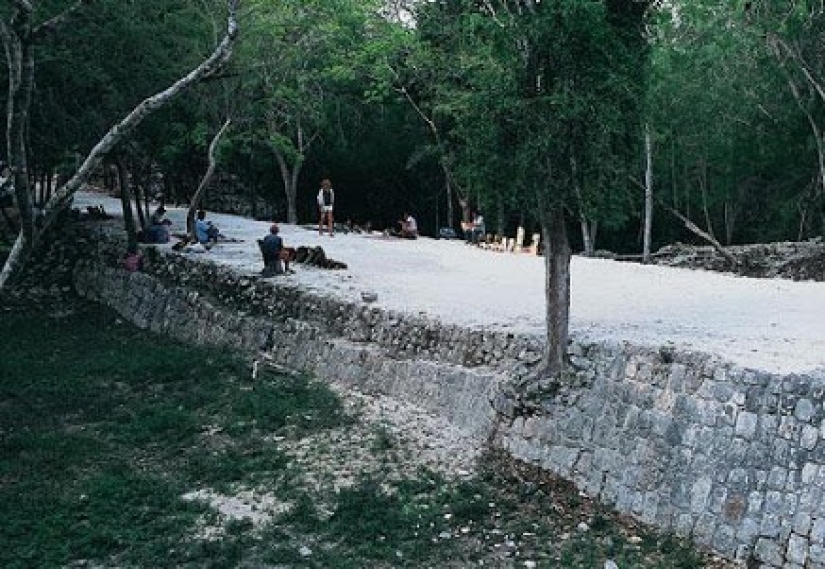The 100 km long Maya road is a miracle of ancient engineering
Categories: History | North America
By Pictolic https://pictolic.com/article/the-100-km-long-maya-road-is-a-miracle-of-ancient-engineering.htmlOf all the ancient civilizations, the culture of the Maya Indians remains the most interesting and mysterious. Much of the heritage of the ancient people is hidden by impenetrable jungles and nature is reluctant to let people access these secrets. The stone road, with a length of 100 kilometers — is one of the most impressive structures that have survived to this day.

Despite active research and excavations, we know very little about the Maya and we can not even say with certainty why their powerful cities fell into decline. The Spaniards, having captured the lands of Yucatan in the 16th century, found only fragments of their former greatness, which, nevertheless, struck the imagination of the conquistadors.

The jungle carefully preserves the secrets of an ancient civilization, perfectly hiding even the most majestic objects. That is why the" Great White Road " of the Maya, with a length of about 100 km, was discovered only in the 30s of the 20th century and then by accident. People in the dense thicket of the forest often came across areas paved with carefully hewn stones, but no one could even imagine that the sites scattered for tens of kilometers were part of one ancient road.
The first explorers of the Maya road believed that it was straight as an arrow and connected two end points: the large city of Koba with the small remote village of Yaxuna. The archaeologists immediately had a question — why build a grandiose stone highway to connect an ancient metropolis with some village.
Later it turned out that the road was not perfectly straight and deviated from the line, connecting a number of important settlements for the Maya from a commercial and strategic point of view. The village of Yaksuna became only the place where the last stone of the ancient highway was laid.

A section of the "Great White Road". Top view
Scientists have established that the road was built in the heyday of the Mayan cities, about 1300 years ago, and the construction order was given by the ruler Kaviel Ajo. The "Great White Road" was needed in order to ensure the fastest possible movement of troops and cargo within the empire. The village of Yaksuna was the most remote outpost of the kingdom on the borders with the neighboring hostile state-Chechen-Itza.
The Maya Road is considered a miracle by both archaeologists and engineers. Throughout its entire length, it has a width of 8 meters and is made of limestone blocks of different sizes. In Mayan times, the road was covered with plaster, which, according to researchers, glowed in the dark thanks to special mineral additives.

During the construction, the Maya did not take into account the difficult terrain, maintaining the main direction of the route. They tore down the hills they met on the way, and filled the hollows and ravines with limestone blocks and earth. Slave labor was widely used, so the grandiose volumes of work of Maya engineers did not bother at all.
Mayan cultural researcher Professor Tracy Ardren, who has devoted many years to studying the Mayan heritage, believes that the road served not only for the movement of troops and goods, but also as an important landmark. Today, almost the entire "Great White Road" is hidden by the jungle, but a thousand years ago everything was different. It passed not through the forest, but through cornfields and orchards, and its bright white canvas was visible from afar.

There were very few forests where the Maya lived at that time, since the Indians actively cut down trees necessary for construction and as firewood. The "Great White Road" also consumed a lot of wood — to make the plaster covering its surface, it was necessary to burn limestone in grand volumes.
Every 8 km, the road widened into a platform where travelers could rest. Thus, even at a halt, troops or traders could remain on a flat, dry surface, without stepping on the ground that was muddy due to rains or, conversely, dried by the sun to a state of fine dust.

The "Great White Road", along with the majestic Mayan pyramids and the large-scale ruins of their cities, proves that in ancient times the Indians were perfectly familiar with geometry, astronomy and engineering. Without solid knowledge in these fields of science, it would be impossible to create a path that accurately connects dozens of villages and cities and has been preserved for 13 centuries.
Keywords: Archeology | Road | Empire | Indians | Maya | Buildings | Highway
Post News ArticleRecent articles

French cinema can easily be called a unique direction in art, which is fundamentally different from what he used to do in ...

Fans of actress Monica Bellucci do not associate her style of clothing with black dresses in vain. A famous Italian woman has ...
Related articles

Ancient Rome is the foundation of modern civilization. The Eternal City has given us jurisprudence, principles of government, and a ...

Passage du Gois (Passage du Gois) is a road laid along the bottom of the Bay of Bourneuf and connects the mainland of France with ...

About 25 million people live in Cairo and its suburbs. The Egyptian capital can compete with small European states in terms of ...

What could be sweeter cats, dogs and other animals? That's right — nothing! Therefore, we have compiled for you the lovely, kind ...